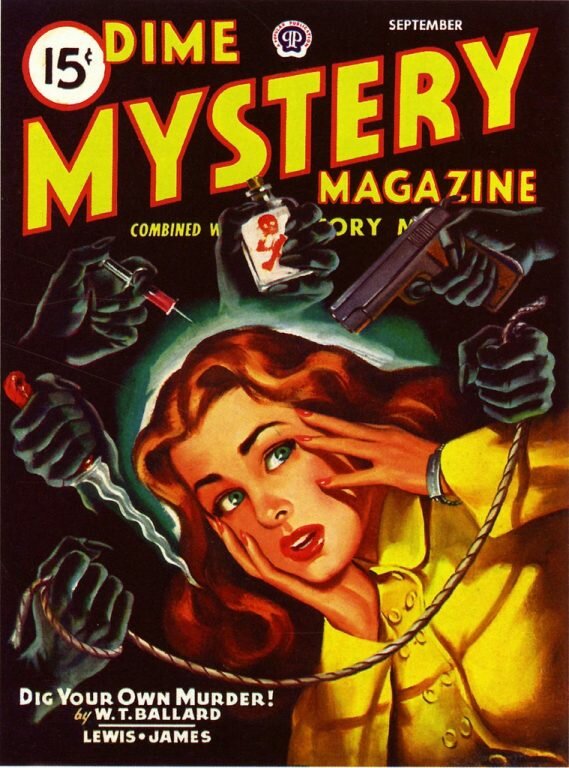Gloria Stoll Karn: Pulp Magazine Artist
Posted by: Roy Wilbur
The following are excerpts from Allison Meier’s piece that appeared in Hyperallergic .
An exhibition of her work was shown at the Norman Rockwell Museum.
Gloria Stoll Karn’s start as a pulp fiction artist reads like one of the genre’s sensational stories. Following her father’s sudden death, she abandoned her dreams of being an artist and took a clerk job at a New York insurance company to help support her family. Soon after she bundled up all her art, and took it to her Queens building’s incinerator. However, the pile of sketches was too big to fit in the chute, so she placed it by the door with her neighbors’ discarded newspapers.
She assumed the art would all be destroyed, so was surprised when the next day there was a knock at her door. It was the janitor, who had discovered her portfolio and shown it to pulp magazine artist Rafael DeSoto, who lived in the same building. (The janitor also sometimes modeled for DeSoto’s vivid covers.) DeSoto was impressed with the young artist’s talent, and connected her with Popular Publications, one of the biggest magazine publishers of “the pulps,” or the inexpensive magazines known for their racy thrills. She quit the insurance job, and between 1941 and 1949, she had a prolific career illustrating for magazines and books at a time when the industry was overwhelmingly dominated by men.
“During the 1940s, when her dynamic and sometimes provocative artworks were featured on the covers and pages of America’s most popular pulp magazines, female illustrators more frequently worked in educational publishing, or created imagery focusing on domesticity and themes relating to motherhood and childhood,” Stephanie Haboush Plunkett, deputy director and chief curator at the Norman Rockwell Museum, told Hyperallergic.
Born in New York City, Stoll Karn studied at the High School of Music & Art (now part of the Fiorello H. LaGuardia High School), and she demonstrated skills early on for portraying people using realism, with a playful streak. She went on to attend classes at the Art Students League of New York, and life model classes at the Society of Illustrators. An 1947 illustration has a couple passionately kissing in the kitchen as smoke billows out of a toaster, another from 1949 has a woman dangling a candy kiss in one hand while she slyly looks back at a flirtatious cowboy. Whereas most artists worked in one area of pulp, whether crime or romance, she was active across genres. At the same time she was painting wholesome cowboys wooing women with curled hair for Rangeland Romances, she was imagining gun-toting detectives and girl Fridays for New Detective, and otherworldly scenes of cat-eyed femme fatales and a skeletal hand displaying a royal flush, each card with a woman’s face transforming into a skull, for Dime Mystery.
Image: Dime Mystery Magazine – 1946-09 – Cover by Gloria Stoll Karn, courtesy of Flickr

